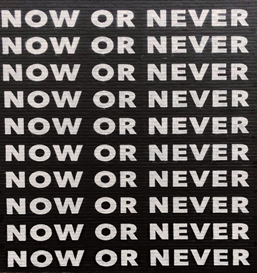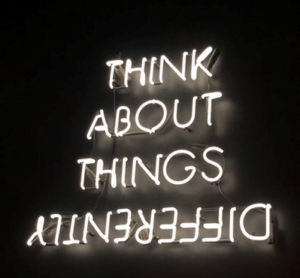Five things to do to identify the Instincts that make you brilliantly you:
Have you ever done something in your life where you felt like you were in the “Flow”? It’s on par with flying down the highway and everything moves in slow motion besides; truly something out of the Matrix stuff. Andy everything you touch, idea you consider, move you make, flows with ease. That’s what executing your instinctive advantage is like where you know this is what you were designed to do and you love the way it makes you feel. This is your Instinctive Advantage and being able to identify, understand and consciously use you can create a leap frog effect in your ability to be able to multiply your abilities.

Instinctive Advantage is our continuously developing traits, characteristics, and inclinations, that have become imprinted in our core and from which ease of our greatest abilities can emerge.
How did I recognize my instinctive advantage?
I was able to identify my IA several years back by simply paying attention to what I naturally have a tendency to do – Consciously Observing Everything. That’s the first part of the process I follow when I execute my IA.
You can also recognize your instinctive advantage by simply accepting the fact that besides the five basic senses (Sight, sound, touch, taste, & smell) every human being possesses five connective senses (Adapt, Believe, Motivate, Scale, Feel) & a super sense i.e. think
Connective Senses are senses that tend to separate homo-sapiens from all other non-humans and mammals.
Let’s explore how each of these connective sense can help you to identify your instinctive advantage:
 1. ADAPT is the connective sense that allows us to deviate from the known path, and thus adaptability is the quality of being able to adjust to new conditions. All homo-sapiens know the art of adapting & this is the major factor that differentiates us from animals.Animals are greatly hard-wired to follow precise rules of behavior. These are commonly known as instincts which provide us all with varying degrees of instructions for basic physical, mental actions. Approximately 1.85 million years ago, however, primates began to deviate from those instinctive behaviors to a degree that, to the best of our ability to understand, led to exponential shifts in who we would become. Humans led the way but homo-sapiens took it to a whole new level some 40,000 years ago. This adaptation led to our ability to change everything and is potentially why we are the last of 9+ other human species that have come and gone before us.
1. ADAPT is the connective sense that allows us to deviate from the known path, and thus adaptability is the quality of being able to adjust to new conditions. All homo-sapiens know the art of adapting & this is the major factor that differentiates us from animals.Animals are greatly hard-wired to follow precise rules of behavior. These are commonly known as instincts which provide us all with varying degrees of instructions for basic physical, mental actions. Approximately 1.85 million years ago, however, primates began to deviate from those instinctive behaviors to a degree that, to the best of our ability to understand, led to exponential shifts in who we would become. Humans led the way but homo-sapiens took it to a whole new level some 40,000 years ago. This adaptation led to our ability to change everything and is potentially why we are the last of 9+ other human species that have come and gone before us.
We face a variety of challenges over the course of our lives, if we know the art of adapting then we are capable enough to cope up with these challenges. In speaking from an opportunistic standpoint, consultant & innovation strategy researcher Max McKeown, captured it exactly when he stated: “Adaptability is about the powerful difference between adapting to cope and adapting to win”. Bruce Lee said it in a more general way by stating “All fixed set patterns are incapable of adaptability or pliability. The truth is outside of all fixed patterns.
As individuals faces a different set of challenging circumstances, the way they react to them & the impacts on their personalities are also different; this is why instinctive advantage of each individual is different from that of others. If you want to recognize your instinctive advantage, then you must pay attention to the way you adapted to the challenging circumstances that you ever faced & how they impacted your overall personality traits.
2. BELIEF is the Connective Sense that enables hope and aspirations for a future. Animals cannot BELIEVE because it’s an abstract concept. Anthropologist say that there hasn’t been the evolutionary pressure necessary to require the storage of abstract ideas.
 I believe that “BELIEF” is the Connective Sense that has allowed homo-sapiens consider a present concerning a future self. Consider for instance: If you place a rat into a half-full bucket of water the rat will swim for a short period of time before it gives up and drowns. If you, however, place it in a bucket of water just below the edge, that rat can swim for hours because of its belief that it can potentially escape the bucket. That’s the instinctive power of survival that drives its determination based on a concrete belief – the bucket’s edge can be reached. If a lion, however, chases a gazelle and fails to catch its prey, it will never return home to consider what it did wrong and practice drills to be better because the concept of practice consciously practicing is abstract and falls beyond the ability of animals.
I believe that “BELIEF” is the Connective Sense that has allowed homo-sapiens consider a present concerning a future self. Consider for instance: If you place a rat into a half-full bucket of water the rat will swim for a short period of time before it gives up and drowns. If you, however, place it in a bucket of water just below the edge, that rat can swim for hours because of its belief that it can potentially escape the bucket. That’s the instinctive power of survival that drives its determination based on a concrete belief – the bucket’s edge can be reached. If a lion, however, chases a gazelle and fails to catch its prey, it will never return home to consider what it did wrong and practice drills to be better because the concept of practice consciously practicing is abstract and falls beyond the ability of animals.
So, if you want to recognize your instinctive advantage, you cannot ignore the connective sense of ‘belief’ i.e. you must have strong belief in yourself & strong belief in your abilities.
3. MOTIVATE is the connective sense where we respond to the stimuli we receive  (sight, sound, etc.), and when aligned with other connected senses, it provides the incentive to move forward towards an objective. Without ‘Motivate’ as a connective sense, the stimuli may align with one or more connective senses but the person takes no action – they are
(sight, sound, etc.), and when aligned with other connected senses, it provides the incentive to move forward towards an objective. Without ‘Motivate’ as a connective sense, the stimuli may align with one or more connective senses but the person takes no action – they are
unmotivated by the possibility even though they may believe. That’s why in order to recognize your instinctive advantage, you must be motivated enough!
4. SCALE is one’s connective sense that helps the person see the larger vision of the possibilities and can be the most difficult connective sense to achieve. I began to develop
possibilities and can be the most difficult connective sense to achieve. I began to develop
the connective sense of scale when I began to travel internationally. By comparing my
new – global experiences with the typical of the USA, I began to understand and
recognize the concept of scale and how to look at the world with big picture orientation.
Why is this connective sense so important? Because your ability to be able to see how big
you can be, is dependent upon how big is your understanding.
5. FEEL is the most unknown connective sense because we’re not accustomed to considering abstract ideas. As mentioned, the brain has not had the time to consider and learn to process ideas that are abstract. Many of us however know that our ability to pick up on energies has been what has allowed us to survive to present day – going with intuition and following one’s “Gut Instinct”. Some people even have the ability to feel across space and perceive what most would consider as the un-perceivable.
considering abstract ideas. As mentioned, the brain has not had the time to consider and learn to process ideas that are abstract. Many of us however know that our ability to pick up on energies has been what has allowed us to survive to present day – going with intuition and following one’s “Gut Instinct”. Some people even have the ability to feel across space and perceive what most would consider as the un-perceivable.
This was my experience as well back in 2002, 8 months after the birth of my first daughter. My ex-wife was feeling sick and decided to go get a checkup only to be told by the doctor that she could be pregnant. Once my ex returned home and told me about the possibility, she received a call from her sister in New York. Her sister had a good friend who we did not know but this friend had just called my ex-sister-in-law to inquire about my ex stating that “You know she’s pregnant”, and of course my ex was. Many people feel strongly about their 6th sense of perception and I challenge you to examine how yours plays into your instinctive advantage.
Super Sense
THINK is the ultimate ability that transcends Instinct. It is the Super Sense. Whereas animals operate largely from instinctive behavior to varying degrees, homo-sapiens migration was the key to us being able to move in directions that have now equipped us with the knowledge to change the world and even the human DNA itself. We think in abstract ways and adapt our ideas to align with our beliefs. This is truly human and homo-sapiens have exploded this ability exponentially.

These Connective Senses are linked to our 5 basic senses and enable greatest abilities.
How do I leverage my IA:
When I leverage my IA, I use the basic sense of sight and hearing to observe my environment and the connective senses of ADAPT and BELIEF and super sense of THINK to consciously acknowledge the stimulus I take in. When I do this conscious review of the experiences, I’m able to effectively store the memories in a way that makes them easily retrievable at times of need. I call this Active Observance, and this is the first part of my involuntary IA.
In the next part of my IA, I call Experimental Curiosity. During this action, my brain continuously runs through a process of challenging parts of the Actively Observed experiences by asking the questions of “How Come, “What If”, “Why” and a whole series of other inquiries that challenge the observed. In doing so I can walk through a process of seeking to understand those observations. Some of that dialogue involves pain points being experienced and whether a path may exist to monetize a solution. Others involve questions of how something works while answering the question myself by applying a theorized process.
It doesn’t matter whether I am right or wrong. It’s just the mental process of seeking to construct answers based on all of my other experiences and that’s is the real point to the exercise. The ability to ask the questions of “what” and even more importantly, to identify the revenue potential, is the catalyst that spurs the 3rd part of my IA I call Connective Assemblance.
In truth, however, Connective Assemblance is not an inclination but rather a way by which I capitalize on my IA.
- With Connective Assemblance I can take the opportunities identified
- During the Experiential Curiosity process, pull various experiences from memory and assemble a number of those experiences to create a new solution.

This is my Instinctive Advantage which is empowered by my unconscious ability to use my eyes and ears to scan my environment for anomalies. I’ve grown this skill over the years where I now naturally search for the a-typical and this is where I find opportunities.
It is an automatic process for me, just as Magic Johnson’s ability to know where everyone was and would be on the court at any given time – court vision, was automatic for him.
In applying CI to Magic, I can see his use of sight, sound and potentially touch as well as his connective senses of THINK and ADAPT to instantly calculate time, distance, speed and direction as well as the player’s dynamic nature to instantly determine where his teammates and opponents would be at any point in the play. He no longer has to think about it.
As I told you how I discovered my instinctive advantage & how I do benefit from it, you can also work to identify yours by understanding that you will also have to consider your own “Hows” and “Whys” surrounding your behavior.
Think Differently and learn to identify and leverage your IA, the results can be life-changing.
